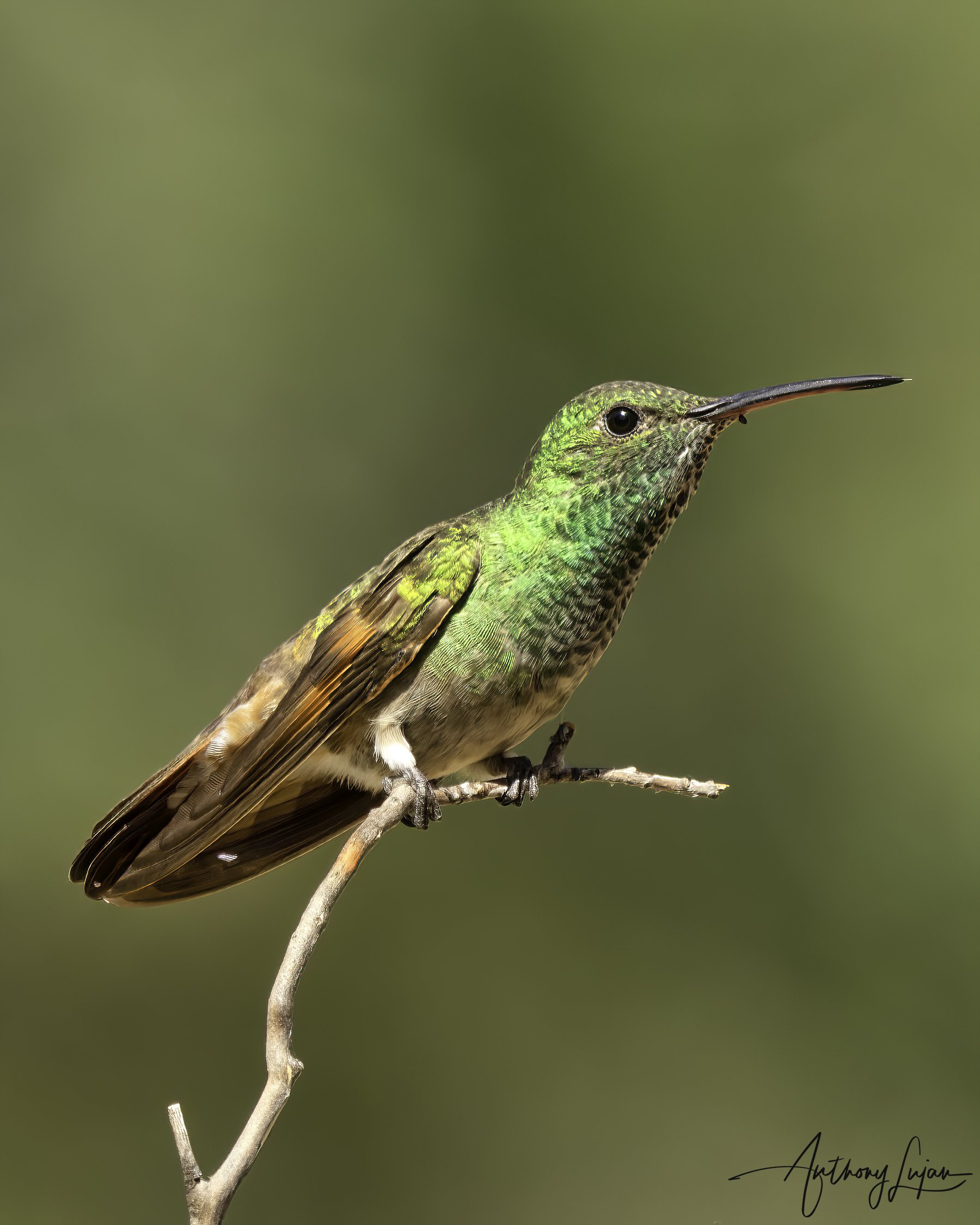Berylline Hummingbird
Berylline Hummingbird (Saucerottia beryllina)
Name Origin:
The genus name Saucerottia honors Antoine Claudius Saucerotte, an 18th-century French physician and naturalist. The species name beryllina is derived from beryllus, Latin for “beryl” or “precious green stone,” referring to the bird’s bright green plumage that shimmers like a gemstone in sunlight.
Quick Facts
🪶 Length: 9–10 cm (3.5–3.9 in)
⚖️ Weight: 4–5 g (0.14–0.18 oz)
🌎 Range: Mexico to northern Central America
🧭 Elevation: 900–2,400 m (2,950–7,875 ft)
🌸 Diet: Nectar and small insects
🏡 Habitat: Pine-oak and evergreen forest edges, coffee plantations, and gardens
🧬 Clade: Trochilini "Emeralds" (mid-elevation hummingbirds)
📊 Status: Least Concern (IUCN)
Subspecies & Distribution
Berylline Hummingbird (Northern)
1. S. b. viola
Distribution: Western Mexico from Sonora to Michoacán and Guerrero, rarely reaching southwestern USA.
2. S. b. beryllina
Distribution: Central Mexico from México State south to southern Veracruz and Oaxaca.
Berylline Hummingbird (Sumichrast's)
3. S. b. lichtensteini
Distribution: Southern Mexico, western Chiapas.
4. S. b. sumichrasti
Distribution: Southern Mexico, extreme southeastern Oaxaca, north-central and southern Chiapas.
5. S. b. devillei
Distribution: Southern Guatemala and El Salvador to central Honduras.
Species Overview
The Berylline Hummingbird is a radiant, medium-sized species of the Mexican highlands and northern Central America. Known for its glowing green body and rufous wings, it is a frequent visitor to forest edges, shade coffee farms, and gardens. Its adaptability to human-altered landscapes and bold personality make it one of the most conspicuous hummingbirds in its range.
Male Description:
The male has vivid emerald-green upperparts, rufous wings, and a shining green throat and breast. The underparts fade to grayish-white, and the tail is metallic bronze-green. The bill is straight and black, with a faint reddish base. In good light, the bird glows with beryl-green iridescence, especially when hovering among sunlit flowers.
Female Description:
Females are similar but slightly duller, with less intense green and more grayish underparts. Their tails are shorter and more rounded, and the rufous in the wings is paler. Both sexes are territorial and often aggressive toward other hummingbirds at feeding sites.
Habitat & Behavior:
This species inhabits pine-oak and evergreen forests, plantations, and forest edges between 900 and 2,400 meters. It feeds on nectar from native and ornamental flowers, including Inga, Salvia, and Heliconia, and supplements its diet with small insects. Males defend flower patches vigorously, perching conspicuously between foraging bouts.
Conservation Note:
The Berylline Hummingbird is listed as Least Concern by the IUCN and remains common in much of its range. Its adaptability to modified habitats and frequent presence in gardens contribute to its stable population. However, deforestation and agricultural expansion in some highland areas could reduce suitable habitat. Conservation of forest edges and mixed agroforestry systems supports this vibrant and wide-ranging species.
Below is the Berylline Hummingbird (Saucerottia beryllina beryllina)
Photographed in La Pintada and Atoyac de Álvarez, Guerrero, and in Tlacolula, Oaxaca, Mexico
This individual belongs to the nominate subspecies beryllina, which occurs widely in the montane regions of central and southern Mexico. It inhabits pine-oak woodland, forest edge, and semi-open mountain scrub between 1,000 and 2,500 meters, often frequenting flowering trees and shaded garden areas.




Below is the Berylline Hummingbird (Saucerottia beryllina viola)
Photographed at Ramsey Canyon Inn, Cochise County, Arizona, United States
This individual belongs to the subspecies viola, the northernmost and smallest form, found in the Sierra Madre Occidental of northwestern Mexico and occasionally into southeastern Arizona’s Sky Islands. In the U.S., it occurs only locally in oak–pine canyons such as Ramsey Canyon, Huachuca Mountains, and Miller Canyon.




Checkout Anthony’s playlist of this species! Click the top right dropdown to see all the videos.

